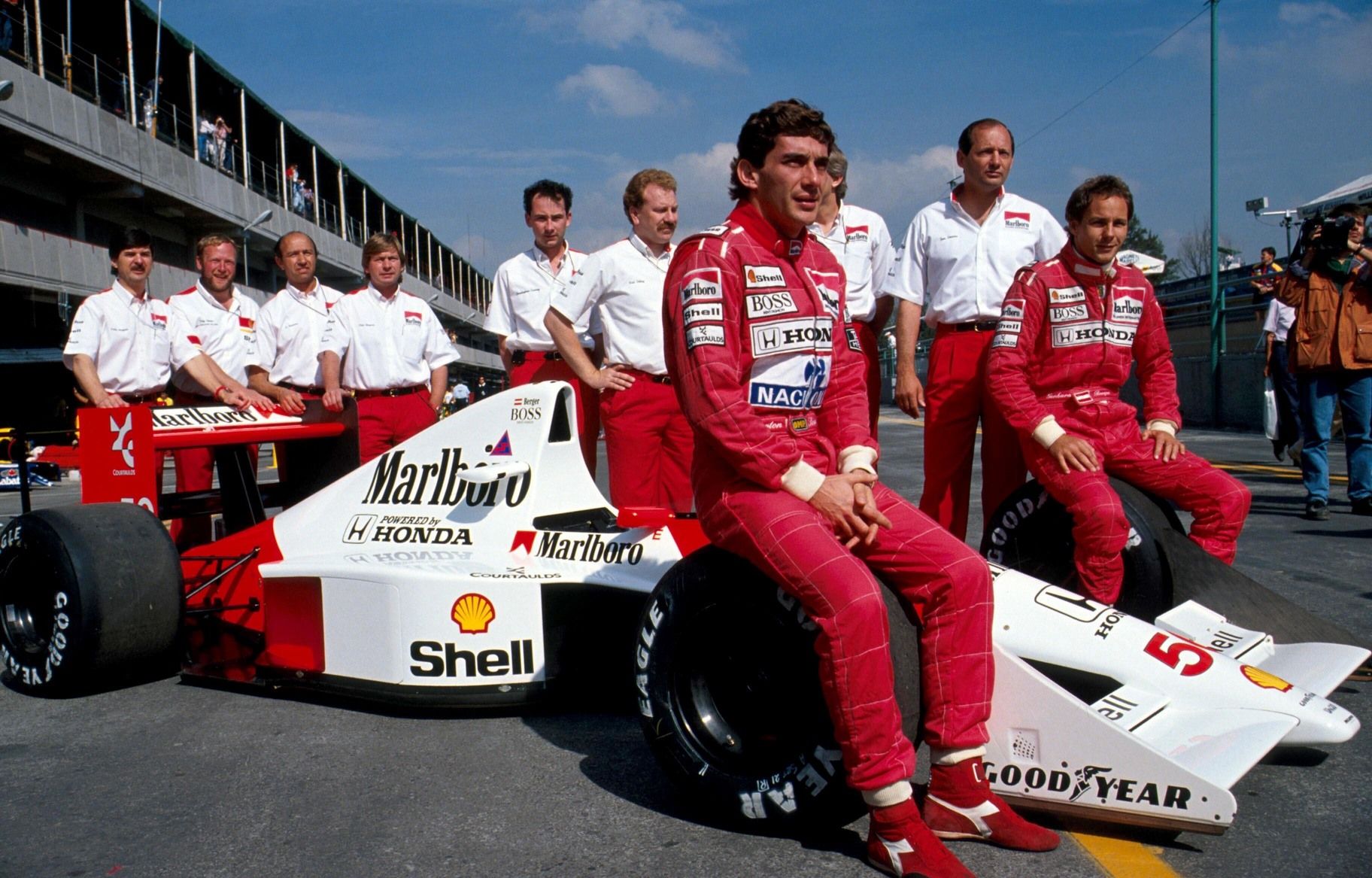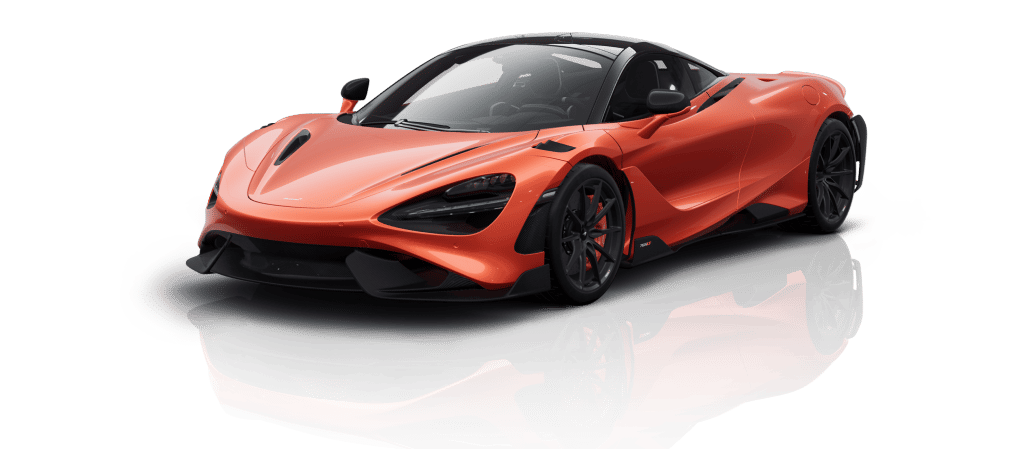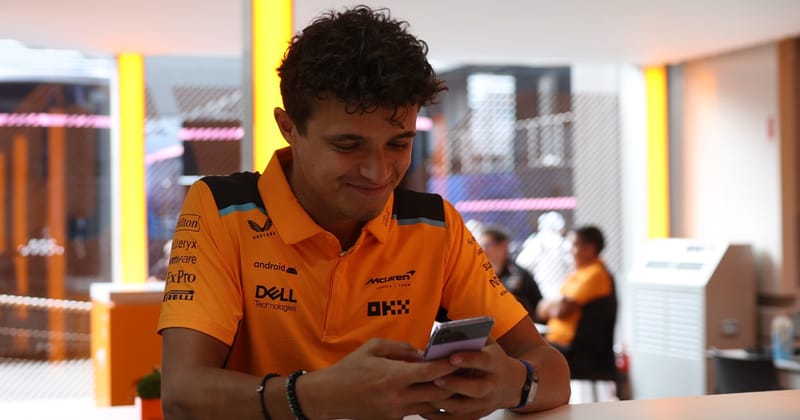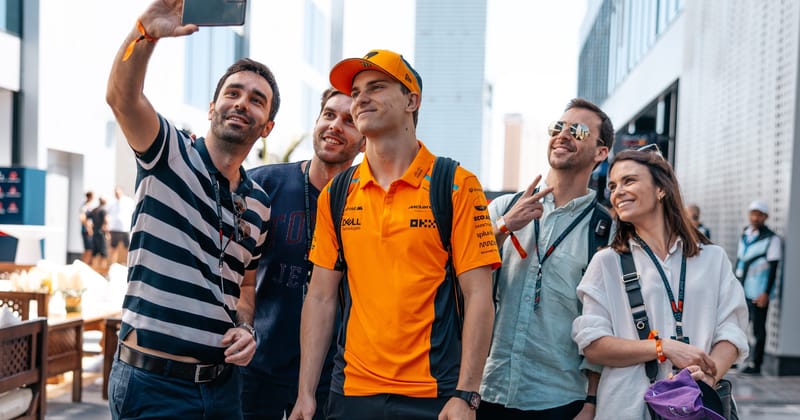
How good actually was Ayrton Senna? Hint: Exceptionally
An in-depth look at Ayrton Senna’s driving style and why he’s considered an all-time great
Reading time: 19.5 minutes
Time is running out in Qualifying, but Ayrton Senna is sitting in his car, ignoring his team's calls to leave the garage. Eventually, the signal comes from Ayrton to switch on the engine, but as he starts to roll out of the garage, he puts the brakes back on. “Ayrton, we need to go.” Yet, he remains at a standstill.
“Finally, he leaves, and he puts it on pole,” former McLaren Designer and Engineer Steve Nichols says with a smile. “I asked him afterwards what he was doing, and he said, ‘My heart was pounding so hard and so fast, and I was trying to get my heart under control.”
Ayrton Senna was the most intense man you’d ever meet, so much so that, sometimes, even he needed to calm himself down.
The three-time Formula 1 World Champion is remembered as one of the greatest drivers to have graced the planet, arguably our sport’s most iconic and highly skilled athlete. Someone whose skill on track was matched by his work ethic off it, an otherworldly talent.
Yet, for some, he took things too far. He could be aggressive with his driving and occasionally overstepped the mark - an example of a racer too willing to do whatever it takes to win. The answer, as always, is probably somewhere in between.
So, just how good was Ayrton Senna? And what made him and his driving style unique?

A supernatural talent
There wasn’t any one thing that made Senna special, it was the combination of everything. He not only possessed more natural ability in his little toe than most did in their entire bodies, he was also willing to work harder.
Senna had a sixth sense about him. He could feel and see things others couldn’t. During a rain-hampered Formula 3 race at Silverstone, Senna glided around the outside of Martin Brundle in the wet, seconds before the race was red-flagged due to the weather. Brundle attempted the same move at the restart, in what appeared to be identical conditions, and ended up in the grass. “Your line didn’t work”, he says to Ayrton, who responded: “It was too wet.” That level of perception isn’t human.
“Even then, you looked at him and saw a future World Champion. But it wasn't like you were saying anything clever, it just stood out”, says David Tremayne, a Hall of Fame F1 Journalist who covered Ayrton Senna across multiple series.
Known as the ‘King of the Wet’, Ayrton’s ability in the rain was the stuff of legend, but it didn’t actually come naturally to him. After a tough race in the rain at Interlagos as a junior driver, Senna set about fixing this blind spot in his arsenal. From then on, every time it rained, Ayrton dropped everything to practice driving his go-kart in wet conditions.
Destined for success
F1’s greatest risk-taker?
This amount of practice, combined with his willingness to take risks, made him invincible in wet conditions. Not that he ever saw himself as a risk-taker. Senna had tremendous self-belief, and an overtake was only a risk if he doubted his ability to make it happen. Senna never did.
“It was completely calculated,” says Indy Lall, who originally joined McLaren in 1981 as a Mechanic. “For me, I'm 100% absolutely sure the way he drove was pure skill and ability. How you propel yourself to that level is another dimension altogether, isn't it? It's quite scary - really, really quite scary - mind-boggling. That's not risk-taking, it's belief in yourself.”
“It was a psychological thing,” adds Peter Hodgman, who originally joined McLaren in 1980 as a Race Mechanic. “I asked him several times, ‘Everybody thinks you love the wet?’ And he says, ‘No, I don't. But I like to say that I do.’ It would give him an edge.”
Senna knew the power of psychology and how others saw him. On track, he spent years cultivating a ruthless and aggressive persona, that of a driver who wouldn’t give an inch, and it made him a terrifying prospect to come up against.
“How you propel yourself to that level is another dimension altogether, isn't it? It's quite scary - really, really quite scary - mind-boggling”
Indy Lall
Joined McLaren in 1981 as a Mechanic
“When people saw his helmet coming up behind them, most were easier to pass because they knew that he would give no quarter in a man-on-man situation,” says Neil Oatley, who originally joined McLaren in 1986 as a Chief Designer.
Throughout his junior career and his early days in racing, Senna made it evident that he’d rather crash than give way. This meant that when he did make an aggressive move, he knew the driver in front, whoever it might be, was almost certain to move out of the way, because if they didn’t, both cars would be out of the race.
This contributed to his belief that he could do no wrong. If his rivals knew that he’d rather crash than pull out of a move, and they refused to get out of the way, then that was their fault.
“His whole style was, if you were in front of him, he would just throw it down the inside of a corner, and either you made way, or you were going to collide,” Martin Brundle once said. “That was his way of saying: ‘Right, I'm the boss."

“Dancing on the ragged edge of grip”
These psychology gains only work if you’ve got the ability to match, though. That style simply wouldn’t fly if the driver wasn’t actually immensely talented. If he had solely been reckless, drivers wouldn’t have given him the space nor the time of day. Drivers have to earn that level of respect. With Ayrton, they knew they’d be passed regardless, so why be taken out in the process?
“He was convinced he was the best driver in the world, which was probably correct,” says Neil Oatley.
Senna and his greatest rival, Alain Prost, possessed two very different but equally successful driving styles. The two were the greatest of their generation and potentially of all time. Prost was more calculated and smoother, whereas Senna was more aggressive, driving on emotion and instinct.
Although there was little, if anything, to separate the two in terms of ability, Senna’s style was arguably the more romantic of the two and played a part in why the F1 community became so seduced by him.
It was also something of a juxtaposition. He would wrangle every inch out of his car and yet could make it appear as if it were dancing. He wrestled with his machinery, but made it look elegant. Even in those days, when cars were much more challenging to drive and naturally more aggressive, smoother drivers still tended to prosper. You didn’t need to drive on the limit to the extent Senna did, but he revelled in it.
Some athletes perform better when they’re angry, Senna was at his best when it felt like he was on the verge of losing control of the car - every near miss fuelled his adrenaline, his blood pumping as he edged closer to finding the boundaries of what was physically possible. His style appeared beyond the realms of physics, and truth is, it probably was.
“His driving style was very strong, very aggressive, and yet, there was a sort of delicacy to it," Steve Nichols explains. “I remember at one race, we sat together and watched his Qualifying session on the big screen.
“There was a camera in the car over his shoulder and one from above the car, and you could see that the car just looked alive, dancing on the ragged edge of grip, absolutely on the limit. Yet, in the cockpit, it looked like absolute serenity. It looked so calm, you’d think he was half asleep. Like there was nothing to it. It was remarkable.”

That throttle technique
Listen closely enough to a video of Ayrton driving, and you’ll hear a distinctive sound, different from any other in F1 history. Senna’s unique throttle-stabbing technique remains arguably the most unique style the sport has ever seen.
“We’d organised a test at the Hungaroring,” Steve recalls. “I wandered across the car park, stood up on the hill, and watched him coming through a corner. That's the first time I really noticed this: ‘baa, baa, baa’. That was kind of a surprise to me, and we never talked about it much, it was just part of what he did.”
In simple terms, with the turbo-engine cars, most drivers would progressively increase the throttle coming out of a corner, which prevented a weight imbalance across the car. This provided more control and better grip, but it slowed the car down, as it caused turbo lag, meaning that the turbo wasn’t producing as much power.
Senna, however, would stab at the throttle, which kept the turbo spinning and in peak power range. This unusual technique was aggressive and decreased both control and grip, making it much more likely that he would lose the tyres and cause wheelspin. But by tapping on the throttle at such speed and regularity, and through his sheer ability to manoeuvre a car, Senna found a way to maintain control.
Many have their own theory of where this originated from, some – such as Scott Kevin Mansell, a British former racing driver – theorise that it was a technique he used to great effect in his karting days, which stuck. Others say he developed it during F1’s turbo era.
“I felt that there were a couple of things he was trying to do,” Steve Nichols continues. “I think one would be keeping the turbo spooled up to minimise turbo lag, but also, I always thought that he was constantly probing the limit. Maybe he would slightly go over it and back off, dancing over and under the limit. I think, maybe, that’s what he was doing – it was helping him to sense the grip, and he felt like he had to go a little over the limit to know he was there.”

He could see things others couldn’t
Senna was an elite talent who’d have backed himself to win in a soap box if it was presented to him, but for all of his immense confidence, he recognised the importance of the team. He drove with the self-belief of a man who thought himself a God, but carried himself with the modesty of a mortal – at least when it came to those in his team.
“He mesmerised you with his words and gave off an energy that felt almost spiritual in its nature,” says Peter Prodromou, who originally joined McLaren in 1991 as a Junior Aerodynamicist. “There was something special about this individual.”
Some have the ability to make the good great, Senna could take it to a supernatural level. This applied not only to the cars he drove, but the team around him. His charisma and hypnotic aura no doubt helped, but it was his work ethic that drew the best out of them. Senna led by example. He would demand an awful lot and could be cutting with his words, but gave everything he had and no one ever doubted he’d repay them in spades.
At the time, data was in its infancy, meaning the value of a driver's input was increased tenfold, and there was no one better at it than Ayrton. He saw things others couldn’t, and was very rarely, if ever, wrong.
“He mesmerised you with his words and gave off an energy that felt almost spiritual in its nature”
Peter Prodromou
Joined McLaren in 1991 as a Junior Aerodynamicist
“His hit rate was high, very high,” says Scott Bain, who originally joined McLaren in 1991 as a Design Draughtsman. “Some of the requests that would come back, you'd think: ‘Really? He's never going to feel that?’ But we’d do it, and off he'd go. Suddenly, he'd be half a second a lap quicker than everybody else in Qualifying. It was like: ‘Okay, fine."
He had an insatiable desire to learn and improve. At races and tests, Ayrton would often spend his evenings alone in a restaurant or at the hotel, pouring through the day's work, whether it be physical data or his own notes.
Neil Oatley says: “When I started racing, it was quite normal for drivers to be gone by 16:00, whereas he realised the more effort he put in, the better the car would be. I think the great athletes, they have a great sporting ability, but they also have a lot of spare brain power to analyse what they’re doing, while they’re doing it.
“He could be driving extremely fast, but part of his brain was set aside to understand the car and how he can relay that back to the engineers.”
With most drivers, when working through the car's setup sheet, the team could fill out half before their meeting began. With Senna, you couldn’t fill in a single section. Every blank would be analysed and discussed. Throughout his career, this never changed—if anything, he became more detailed in his later years.
“This might take an hour and he might change several things, and sometimes he wouldn’t change anything, but he wanted to explore all possibilities,” Steve Nichols says.
Peter Hodgson adds: “He was really interested in seeing our data. I had this HP plotter, which compared him to [Alain] Prost or [Gerhard] Berger, and you could see where they might be quicker. The next time he went out, he’d make sure he was quicker in that section of the circuit.”

Everything was calculated
In those days, the pit lane opened before the race, and drivers could complete two or three laps if they wished. Senna would often return and ask for the minutest changes, such as increased tyre pressure.
Alain Prost was the same - their debriefs would go on for hours. With Ayrton, the team would always need to allow for his closing question: “Can you explain this back to me?” This way, he knew they had fully understood his feedback. He never meant any disrespect and trusted them completely – this just eliminated any doubt.
When Prost and Senna were teammates, there was always a reluctance to differ between setups. Both were convinced that if given an identical car, they could get more out of it. The team, meanwhile, wouldn’t want to risk being the reason why one of them lost.
One race in Imola, Senna insisted that the ECU (engine control unit) on Prost’s car gave him more performance and convinced the team to reluctantly change them. He went on to win. “I’m sure it was all a bluff,” Peter Hodgman says.
It was all completely calculated, everything Senna did was, even his use of language. When speaking in debriefs – or press conferences, as David Tremayne recalls - he’d often pause before responding. This wasn’t to give himself time to translate from Portuguese – his grasp of English was greater than most native speakers – but because he wanted to think of precisely the right words to use.
“He was able to describe every little detail of a bump around a circuit or particular corner, what gears he needed to take, and so on and so forth,” Indy Lall adds.
Peter Prodromou concludes: “You get the impression that he would've really enjoyed this period of Formula 1, where it has become so technical and interactive.”
You imagine he would, and how we’d have loved to see him make a modern Formula 1 car dance around the streets of Monte Carlo.
Related articles

What was it like to work with Senna?

Bespoke Senna livery launched for the Monaco Grand Prix

What was Ayrton Senna really like away from the track?

How Senna and McLaren forever changed each other

Ayrton Senna's 10 defining moments

5 life lessons from Ayrton Senna

Senna's moments of Monaco magic





